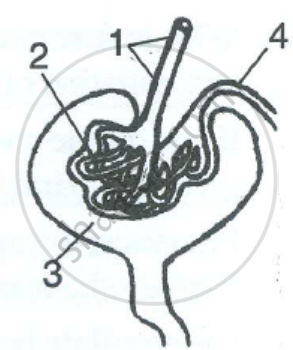Advertisements
Advertisements
प्रश्न
उत्तर
Dialysis is a process of separation of toxic substances from the blood stream through a membrane by kidney machine or artificial kidney.
APPEARS IN
संबंधित प्रश्न
The diagram given below shows a section of human kidney. Study the diagram carefully and answer the questions that follow :

(i) Label the parts numbered 1 to 4.
(ii) Why does part ‘2’ have a striped appearance?
(iii) What is the fluid that passes down part ‘4’? Name the main nitrogenous waste present in it.
(iv) Mention the structural and functional units of kidneys.
(v) Name the two major steps in the formation of the fluid mentioned in Q.5 (a) (iii).
Name a waste gas released by the plants only during the night time.
Name the two waste products of the human body which are produced in the body cells.
In which of the following are the largest amounts of nitrogen excreted from a mammalian body?
(a) breath
(b) sweat
(c) urine
(d) faeces
Write True (T) or False (F) for the following statement. Rewrite the false statement in the correct form.
Excess sugar in the blood is a symptom of diabetes.
Answer the following in short.
List five waste products of plants.
Study the diagram given alongside and then answer the question that follow:

What is the technical term given to the process occurring in 2 and 3? Briefly describe the process.
Differentiate between:
The Renal artery and the Renal vein.
Choose the correct option.
Deproteinised plasma is not found in ______.
Hypotonic filtrate is formed in _______.
